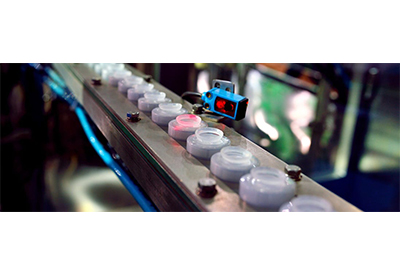A Concise Overview of Common Sensors Used in Automation

July 16, 2021
In today’s increasingly wired world, sensors take center stage. There are many options when it comes to sensors. Here’s an overview of some leading categories of industrial sensors used in automation in consultation with Russ Freeman, a product portfolio manager, with Allied Electronics and Automation in Ft. Worth, Texas.
Inductive proximity sensors
Inductive proximity sensors provide non-contact detection of metallic objects. Some within this category can target both ferrous and non-ferrous metals, while others sense only one or the other. Inductive proximity sensors are suited for many industrial applications, and some are rated for use in hazardous environments. Due consideration must be given to their use in the presence of other inductive proximity sensors, and the environment in which they operate.
“An inductive proximity sensor is my first choice because it is extremely rugged,” explains Freeman. “Basically, you can put as much dirt and grease or other non-metal contaminates on the face of that sensor, and it will still work as long as you don’t exceed the rated sensing distance of the sensor.
Whereas with a photoelectric sensor, dirt and grease on the lens will decrease the sensing distance and causing the sensor to not work properly. So, for the dirty, cruddy places where you’re wanting to sense metal, inductive sensors are perfect. Also, it’s easy to confirm or eliminate an inductive proximity sensor as a solution by two questions. First, is the target metal? Second, can I mount the sensor really close? If the answer to both questions is yes, then an inductive proximity sensor may be the answer. If you get a no to either question, you will probably not be able to use an inductive proximity sensor. “
Capacitive proximity sensors
Capacative proximity sensors feature parallel plates, much like a capacitor. When an object produces changes in capacitance, the sensor is activated. These sensors, by design, are generally used with non-ferrous materials and ideal for close-range applications, such as detection or level monitoring. They can be greatly affected by their environment and interaction with other sensors.
“A capacitive proximity sensor detects based off dielectric content of an item, which is basically water content,” explains Freeman. “This allows you to tune out a lower dielectric and detect a higher dielectric. For example, capacitive proximity sensors can be used on a tank sight glass to determine liquid level in the tank.
You must be careful to determine exactly what liquid you are sensing, because if you’re sensing something such as gasoline, the dielectric of gasoline is very close to the same dielectric of glass, and properly tuning the sensor may be difficult. Whereas if the liquid in the sight glass is water, it would be much easier to tune because of the large dielectric difference of glass and water. One common application is sensing liquid level through a plastic reservoir. This eliminates the need to put a hole in the tank to mount the sensor. However, make sure the tank thickness does not exceed the sensing range of your sensor. Another item to note with a capacitive sensor is that changes in heat and/or humidity will affect the tuning of the sensor. ”
Photoelectric sensors
Photoelectric sensors detect and measure physical objects or quantities by emitting a field or beam of electromagnetic radiation. The sensors allow detection by measuring changes and differences in the return signal.
“Photoelectric sensors are commonly used in all types of automation.” says Freeman. “Anytime you see a conveyor, there’s probably a myriad of photoelectric sensors on that conveyor to sensor position or count objects. But photoelectric sensors are also used for several different applications. Different sensing modes can be used for level, for presence, and even for position. The most common sensing modes are emitter-receiver, retro-reflective and diffused (proximity mode). Each mode has advantages and disadvantages depending on the sensing application. In addition to digital outputs on the sensors, analog outputs are also available in some modes. A photoelectric sensor with an analog output can determine the exact position of an object over a given distance as the object moves.”
Fiber optic sensors
Fiber optic sensors are photoelectric and utilize optical fiber connected to a light source to allow for detection in tight spaces or where a small profile is beneficial. The optical fiber is transparent and made from a silica or glass material, and sometimes plastic. The fibers are very thin often with a diameter just thicker than human hair. The fiber transmits light between the two ends to produce an electrical signal.
“There are two main areas I see fiber optic sensors being used,” explains Freeman. “One is when you physically can’t mount a photoelectric or a proximity sensor to detect in a small area. Or it may be used on small conveyors where you have small items to detect. Imagine you’re going to count the needles for vaccines.
You’d need a very small beam for that needle to break, so that you can count it. Generally, those are high-speed applications. Just imagine, needles going by on a conveyor and how fast the sensor response would need to be. The amplifier is just as important as the fiber itself. The amplifier processes the signal from the fiber and can produce microsecond outputs, output based on color contrast or provide pulse stretching capabilities depending on the model.”
There are numerous categories of sensors. This is a broad overview of four commonly used sensors that many industrial applications use and will select for their applications. Over time, not only will automation advance, but so will the capabilities and characteristics of the sensors.
A best practice for sensor selection is to align with a distributor and vendor who has broad insight into many different applications. Work with vendors to select the proper sensor given each unique circumstance and the technology that is available. Being aware of the basic types of sensors and smartly working with vendors will put anyone in good stead when the time comes to install or replace sensors in the ever-progressing automation environment in which the world now operates.



